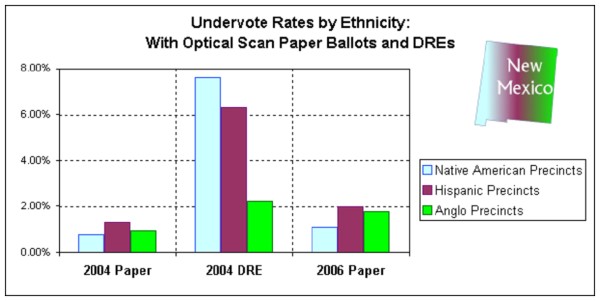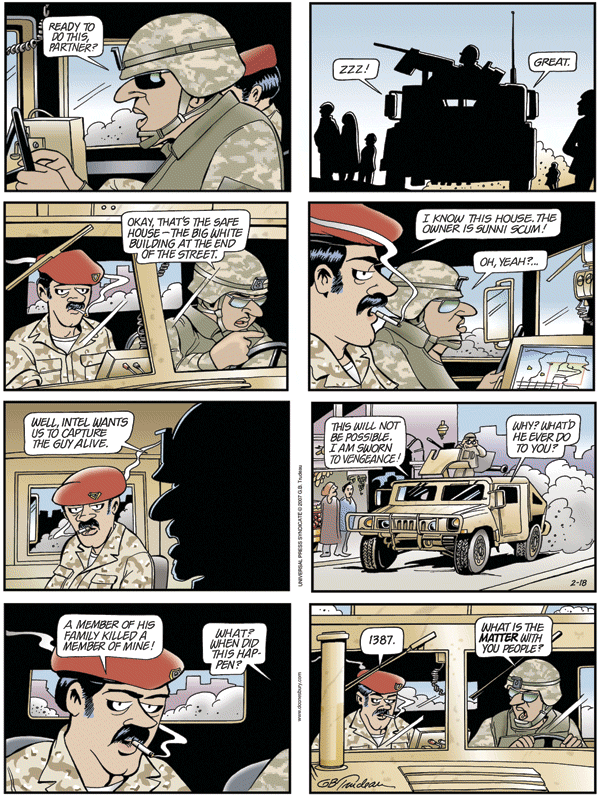Now, I would never accuse my good Republican friends of pushing voter ID for political gain, but somehow I suspect that they won't be quite as enthusiastic when they realize that the political party most likely to be hurt by the law is their own.
The study, conducted by researchers at Rutgers and Ohio State for the US Election Assistance Commission, was completed last June but not publicly discussed by the Commission until earlier this month. It showed that tough voter ID requirements cut overall voter turnout by nearly three percent, black turnout by nearly six percent, and Hispanic turnout by ten percent. But requiring a photo ID, as opposed to other methods such as non-photo ID's or signature matching, cut white turnout far more than minority turnout. Bummer, if you're a Wisconsin Republican.
The full study was actually released last summer but nobody noticed, perhaps because it's kind of tough reading unless you're a masochist. Within the last couple of weeks both USA Today and The New York Times have done articles about the study, although the most interesting write-up I've seen is on this blog. But all of these reports skip over a lot of the details important in Wisconsin, such as the relationship between turnout reduction and the specific type of voter ID. You really need to push through the study if you want to find the good stuff.
This study also didn't examine the rate of fraudulent voting, so it wasn't able to compare the number of valid votes lost due to stricter voter ID requirements to the number of fraudulent votes prevented. But based on the overall findings, the proposed Wisconsin voter ID bill would reduce turnout by perhaps fifty-thousand votes, and it's kind of hard to imagine that there could be anywhere near that many fraudulent votes here.
I've always thought that the basic question voter ID supporters must be willing to answer is how many good votes they're willing to sacrifice to prevent one bad vote. Compared to most other democracies we already have a very low voter turnout, due at least in part to long-standing efforts to disenfranchise one group of voters or another, yet democracies can only work when government has the informed consent of its citizens. Seems to me that we should be doing everything possible to get as many people as possible to the polls, not the other way around.
Yes, we must always be watchful for fraud, but every fraud prevention technique should be judged solely by how it effects the integrity of our democratic process. If a stricter voter ID requirement eliminates more good votes than fraudulent votes, or if it has disproportionate effects on particular groups of voters, then it's a failure. Based on the data now starting to come out, the proposed Wisconsin voter ID law is not likely to meet this standard and should be reconsidered. Here's how the authors of the study put it:
"This research also is unable to answer the question of whether stricter voter identification requirements succeed at preventing vote fraud. The results, instead, tell part of the story. It appears that stringent requirements can reduce turnout. But it remains to be seen whether the reduction in turnout is the price to pay for greater ballot security. That may, indeed, be the case. But it is also possible that strict voter identification requirements, designed to promote legitimate election results, could actually undermine that legitimacy instead."----------------------------------------
Speaking of voting issues that have a disproportionate effect on particular groups, there's some very interesting data just out from New Mexico. In 2006 New Mexico scrapped all their touchscreen voting machines and switched to using only hand marked ballots with optical scanners, so the good folks at Voters Unite thought it would be interesting to retrospectively examine the change and see it had actually made any detectable difference in voting patterns.
The results were rather shocking. They found that DRE (Direct Record Electronic) touchscreen machines had a top-ticket (president of governor depending on the year) undervote rate that was typically three to four times higher than paper ballots. But strangely enough, that huge undervote discrepancy only occurred in precincts that were predominantly Hispanic or Native American. There was little difference in white areas. Check out this chart from the report:

Voters Unite didn't even speculate about why this occurred, but it's pretty clear from this and many other cases that weird things happen with touchscreen machines, and they need a heck of a lot closer scrutiny than they've received so far. Perhaps it's just a coincidence that Republicans love both tough voter ID laws and touchscreen voting machines, but given that in almost every case the resulting changes in voting patterns tend to directly benefit them, it kind of makes you wonder...
Read more about this on Brad Blog.

